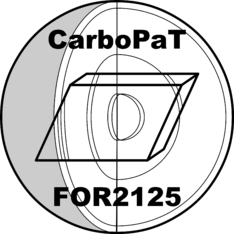Elastic properties of cabrbonates at high pressures and temperatures
One of the most important parameters in quantifying the deep Earth carbon cycle is how much carbon is subducted into the Earth's interior. The first phase of project 6 focused on determining elastic wave velocity data for carbonates at high pressure and temperature conditions that was used to assess the seismic detectability of carbonated assemblages in the mantle. The second phase of project 6 extends this work to consider the redox stability of carbonates throughout the entire mantle and the elastic wave velocities of the newly discovered high-pressure tetracarbonates.
The technical part of the project involves determining the oxygen fugacity inside a diamond anvil cell using iron alloy sensors (Fe-Ir, Fe-Pt) and exploring possibilities to control oxygen fugacity during laser-heated experiments.
The scientific part of the project involves determining the redox stability of carbonates using a laser-heated diamond anvil cell, including the newly discovered high-pressure tetracarbonates. Elastic wave velocities will then be measured of the tetracarbonates to assess their seismic detectability.






